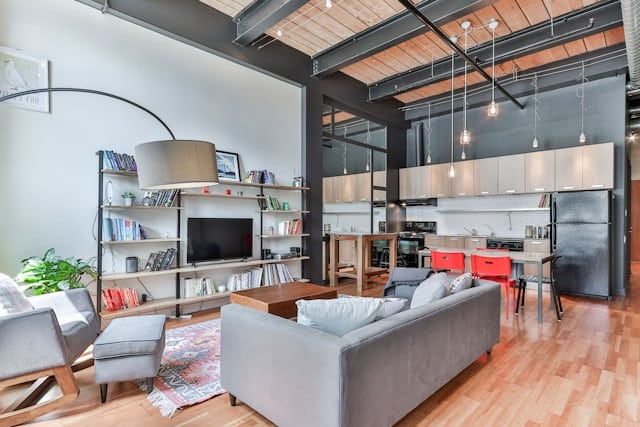With the rapid advancement of technology and the growing concern for the environment, more people are looking for ways to reduce their carbon footprint and live a more sustainable lifestyle. One of the best places to start is right at home. Specifically, how can you make your terraced house more energy-efficient using renewable energy sources?
Adopting renewable energy sources, such as solar and thermal energy, not only cuts down on your energy bills but also contributes to a more sustainable and green future. This article will explore the best ways to integrate renewable energy sources into your terraced house, by focusing on aspects such as insulation, heating, and the overall design of your house.
A découvrir également : How to organize a living room to also serve as a kids’ homeschooling space?
Utilizing solar energy systems
Solar energy is one of the most popular sources of renewable energy. It’s a clean, abundant, and increasingly affordable form of energy. Solar energy systems are becoming more accessible and are one of the best ways to integrate renewable energy into your terraced house.
Installing solar panels on the roof of your terraced house is a great way to harness the power of the sun. These panels collect sunlight and convert it into electricity, which can be used to power your home. You can also install a solar water heating system, which uses the sun’s energy to heat water for use in your home. These systems are highly efficient, and provide a cost-effective and sustainable way to provide hot water.
Dans le meme genre : What’s the best method for drying clothes indoors in a compact space?
In addition to solar panels, solar windows are becoming an increasingly popular way to harness the power of the sun. These windows are made of a special material that absorbs sunlight and converts it into electricity. This is a great way to add more solar power to your home without taking up any additional space on your roof.
Employing thermal energy systems
Thermal energy is another renewable source that can be used in your terraced house. This refers to the energy that comes from heat, and it can be harnessed in a variety of ways.
The most common is through the use of a heat pump. These devices extract heat from the air or the ground and use it to heat your home. They are extremely efficient, and can provide both heating in the winter and cooling in the summer.
A newer technology that is becoming popular is thermal batteries. These devices store excess thermal energy and release it when needed. They can be used in combination with solar panels or other renewable energy systems to provide heating and cooling on demand.
Insulating your home
Insulation plays a key role in the energy efficiency of any home. It helps keep the heat in during the winter and out during the summer, reducing the need for heating and cooling systems.
When insulating your terraced house, pay attention to the materials used. Some materials have better insulating properties than others. For instance, spray foam is known for its superior insulating abilities.
Also, consider insulating not just your walls, but your roof, floors, and windows as well. Double glazing or even triple glazing can significantly improve the insulation of your windows, and insulating your roof and floors can help prevent heat loss.
Designing an energy-efficient home
The design of your house can also play a significant role in its energy efficiency. By incorporating energy-efficient design principles, you can make your home more comfortable and reduce your energy consumption.
One aspect to consider is the orientation of your house. If possible, have your main living spaces facing south. This will allow them to get the most sunlight during the day, reducing the need for artificial light.
Another important design principle is to use natural ventilation. This involves designing your home in such a way that it promotes airflow, reducing the need for air conditioning. It could be as simple as placing windows in strategic locations to catch the breeze, or more complex methods like a house-wide ventilation system.
Using renewable materials in construction
The materials used in construction can also impact the energy efficiency of your terraced house. By choosing renewable or recycled materials, you can reduce your home’s environmental impact even further.
For instance, you can opt for reclaimed wood for your floors or walls. Not only does this save trees, but reclaimed wood often has a unique and rustic look that can add character to your home.
You could also consider using recycled metal or glass in your construction. These materials are often cheaper than their new counterparts, and they have the added benefit of being more eco-friendly.
In summary, there are many ways to integrate renewable energy sources into your terraced house. By utilizing solar and thermal energy systems, insulating your home properly, designing your home for energy efficiency, and using renewable materials in construction, you can create a home that is not only comfortable and stylish, but also sustainable and energy-efficient.
Energy Efficiency Measures and Environmental Impacts
Renewable energy systems are not the only way to enhance the energy efficiency of your terraced house. There are other measures that can be taken to reduce the energy consumption of your home. These measures not only help to lower your energy bills but also contribute to reducing the environmental impacts of energy use, mitigating the effects of climate change.
One efficiency measure that can be employed is the use of energy-efficient appliances. Energy-efficient appliances are designed to use less energy without sacrificing functionality. Google scholar provides numerous case studies highlighting the benefits of using such appliances in terms of energy conservation. From refrigerators to washing machines to light bulbs, switching to energy-efficient appliances can significantly reduce your household energy consumption.
Similarly, adopting energy-saving habits can make a significant difference. This could involve simple practices such as turning off lights and electronic devices when not in use, using natural light as much as possible, choosing to air dry clothes rather than using a dryer, amongst other habits.
Moreover, you could consider switching to a district heating system if it’s available in your area. District heating systems supply heat to multiple households from a central source, often a plant that generates heat by burning waste, biomass, or natural gas. Because the heat is generated and distributed on a large scale, it tends to be more efficient and less harmful to the environment than individual heating systems.
Lastly, regular maintenance of your heating and cooling systems, such as heat pumps, can also improve their efficiency. Regular maintenance ensures that these systems are operating at their optimal capacity, reducing unnecessary energy waste.
Future of Renewable Energy in Terraced Houses
The future of renewable energy in terraced houses looks promising. With the increasing awareness of climate change and the importance of sustainable living, more homeowners are willing to invest in renewable energy sources. This trend is likely to continue in the future, with advancements in technology making renewable energy systems more accessible and cost-effective.
Solar energy, in particular, is showing great potential. The efficiency of solar panels has been steadily improving over the years, and new technologies such as solar windows and solar thermal systems are becoming more popular.
Similarly, heat pumps, particularly those that extract heat from the air, are likely to become more common. As these devices become more efficient and affordable, they could replace traditional heating systems in many homes.
Wind turbines, while not suitable for every terraced house due to space restrictions, can also provide a significant amount of renewable energy. Smaller, more efficient wind turbines are being developed, which could make them a viable option for terraced houses in the future.
Furthermore, there is increasing interest in wall insulation and other energy efficiency measures. These can make a substantial difference in the energy consumption of a house, reducing the need for heating and cooling and thus saving energy.
Conclusion
In conclusion, there are numerous ways to integrate renewable energy sources into your terraced house. Solar energy and thermal energy systems, coupled with efficient insulation and sensible design, can make your home both energy-efficient and comfortable. By adopting these measures, you not only reduce your energy bills but also contribute to a more sustainable and green future.
The use of renewable materials in construction, energy-efficient appliances, and energy-saving habits can further enhance your home’s energy efficiency. The future of renewable energy in terraced houses looks promising, with advancements in technology and increased awareness of sustainable living driving the trend. By embracing renewable energy, we take a significant step in mitigating the effects of climate change and preserving our planet for future generations.















